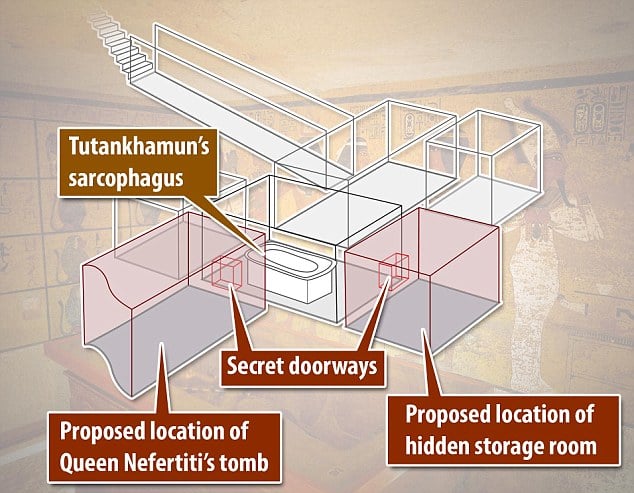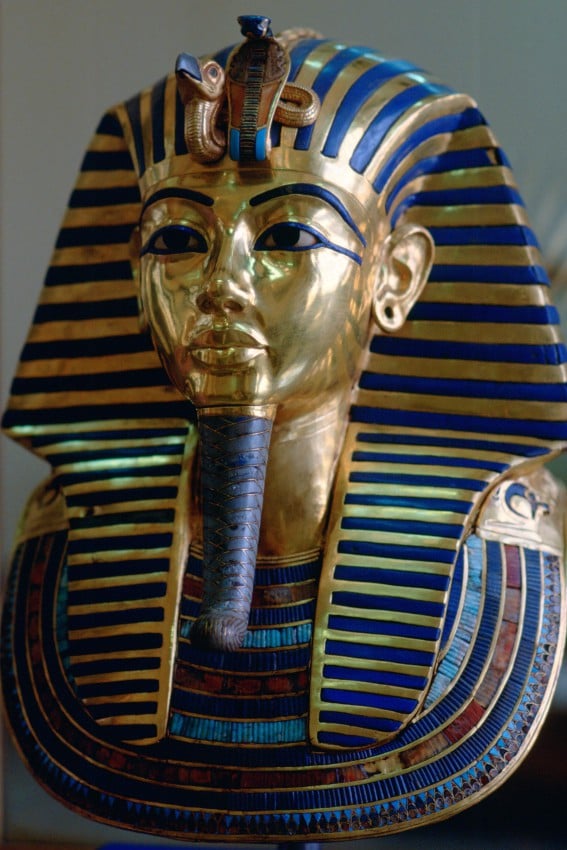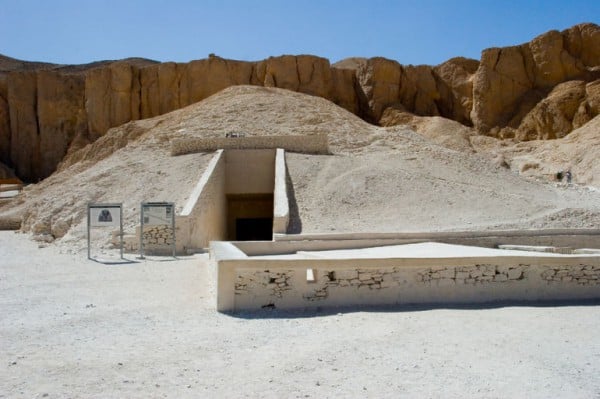Art World
Egypt Gives Green Light to Search for Nefertiti’s Burial Chamber in King Tut’s Tomb
Are we on the cusp of one of the biggest archaeological discoveries ever?

Are we on the cusp of one of the biggest archaeological discoveries ever?

Henri Neuendorf


Nefertiti bust in Neues Museum, Berlin.
Photo: Philip Pikart via Wikimedia Commons.
The Egyptian Antiquities Ministry has granted British Egyptologist Nicholas Reeves preliminary approval to test his radical theory that Queen Nefertiti’s crypt may be located in a secret burial chamber inside King Tutankhamun’s 3,300-year-old tomb.
The researcher from the University of Arizona will travel to Cairo on September 28 to test his theory, using state of the art non-invasive radar technology.
“It’s not going to cause any damage to the monument,” Mouchira Moussa, media consultant to Antiquities Minister Mamdouh el-Damaty, told AP.

A diagram of King Tut’s tomb showing the suspected locations of Nefertiti’s tomb.
Photo: Nicolas Reeves
According to AFP, Reeves will present his theory to al-Damati and join “the best Egyptologists in the ministry to examine the interior of the tomb.”
In his paper—entitled “The Burial of Nefertiti” and published in August—Reeves alleges that high-resolution images of King Tutankhamun’s tomb show “distinct linear traces” concealed “beneath the plastered surfaces of the painted scenes.” The Egyptologist believes that these are “two hitherto unrecognized doorways.”

The funerary mask of King Tutankhamun at the Cairo Museum, Egypt.
Photo: Tim Graham
The archaeologist believes that the doors could lead to “the undisturbed burial of the tomb’s original owner—Nefertiti.”
Reeves’ paper is based on the thesis that Tutankhamun was Nefertiti’s son. He argues that due to Tutankhamun’s premature death—the “boy king” died aged just 19—no tomb was prepared for him. He writes that Nefertiti’s tomb would have been reopened ten years after her death so her son Tutankhamun could be buried there too.

The entrance to King Tutankhamun’s tomb.
Photo: viator.com
“We’re very excited … It may not be a tomb belonging to Nefertiti, but it could be a tomb belonging to one of the nobles.” Moussa said. “If it is Nefertiti’s, this would be very massive.”
Related stories:
Confusingly Huge and Ugly Public Sculpture of Queen Nefertiti Taken Down in Egypt